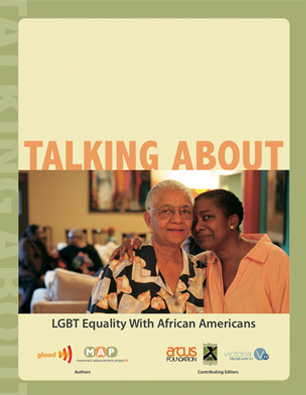The Bottom Line
An overwhelming majority of African Americans strongly agree that LGBT people experience discrimination. Likewise, they strongly support efforts to secure equal rights for LGBT Americans. However, research also shows that using the term civil rights to describe LGBT equality hinders our conversations with many African Americans.
Talking About LGBT Equality with African Americans examines these findings and offers approaches for developing more effective discussions, including: elevating the voices and stories of African Americans who are LGBT, avoiding comparisons to the African American Civil Rights Movement, and focusing on shared concerns about hate crimes, bullying in schools, and employment and housing discrimination.
Talking About LGBT Equality with African Americans Download
Recommended citation:
Movement Advancement Project and GLAAD. October 2011. "Talking About LGBT Equality with African Americans." MAP's
Talking About LGBT Issues Series.
https://www.lgbtmap.org/talking-about-lgbt-equality-with-african-americans (date of access).


